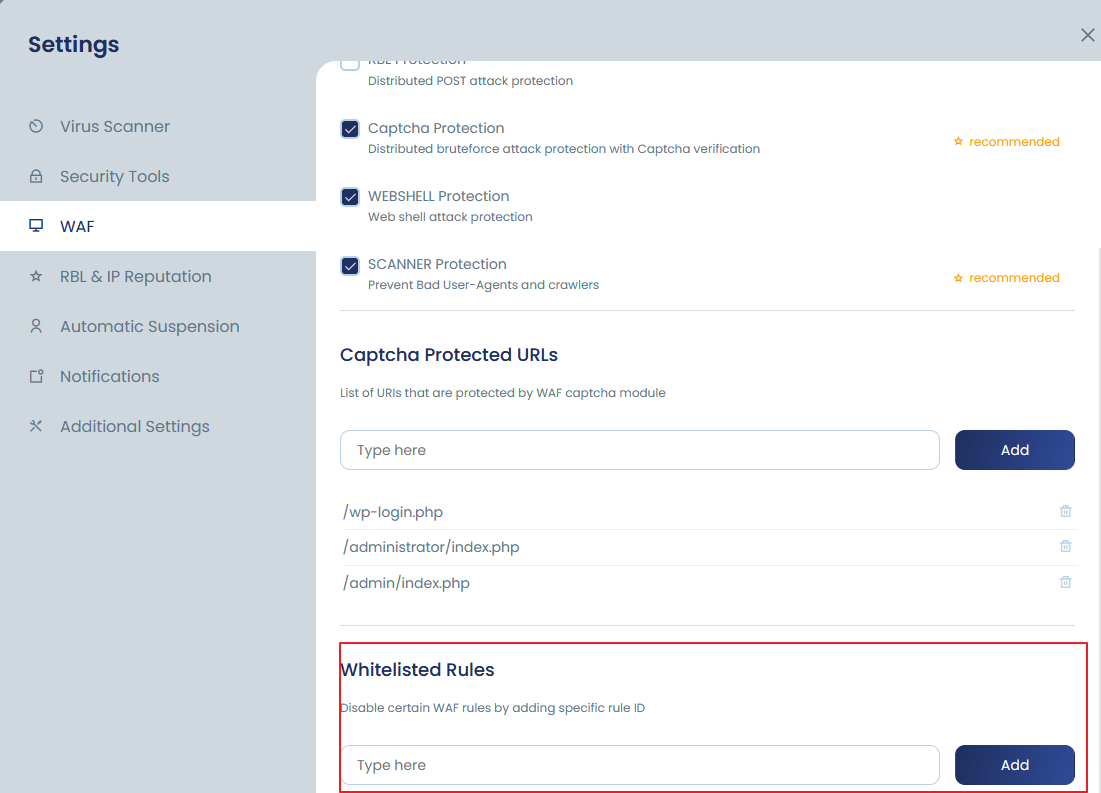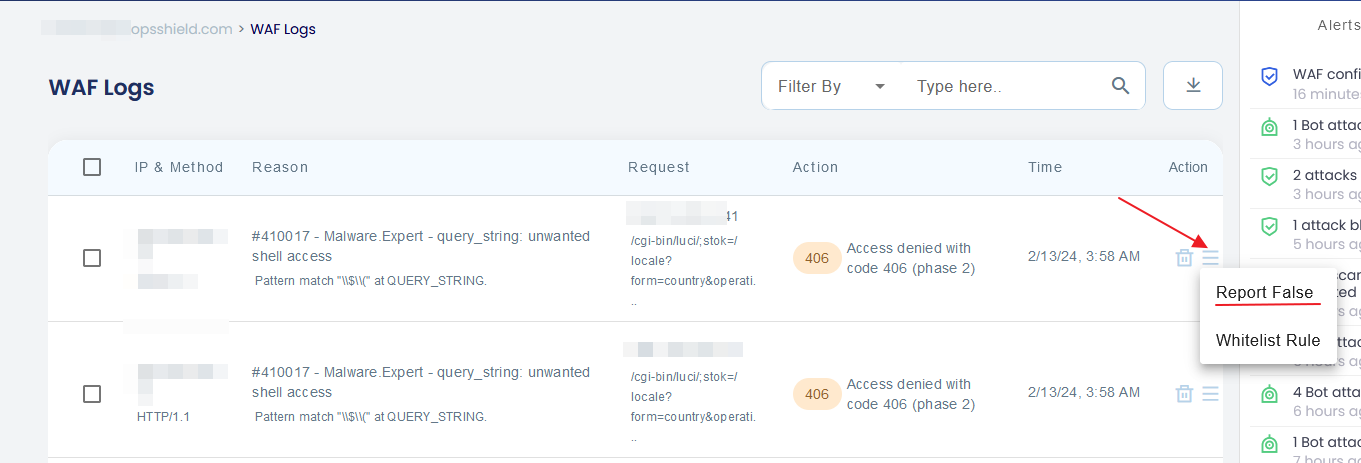You can whitelist a WAF rule ID in 3 ways.
1. From WAF Settings
You may go to Settings >> WAF >> Whitelisted Rules and add the WAF rule ID into the list

2. From WAF Logs
From the WAF logs page, you can find the option to directly whitelist a rule from the action menu against each entry.

3. Using CLI
You can also use the cpgcli CLI option to quickly whitelist the rule ID from your SSH terminal. Please run “cpgcli -h” for all options available.
cpgcli waf --whitelist --add RuleIDReport a false positive for a WAF Rule Trigger
If you believe that the WAF rule triggered a false positive and the WAF is blocking a legitimate request, you may report it as a false positive. You may do it directly from the WAF logs page. The option to directly report a rule from the action menu against each entry ( refer image below ).

